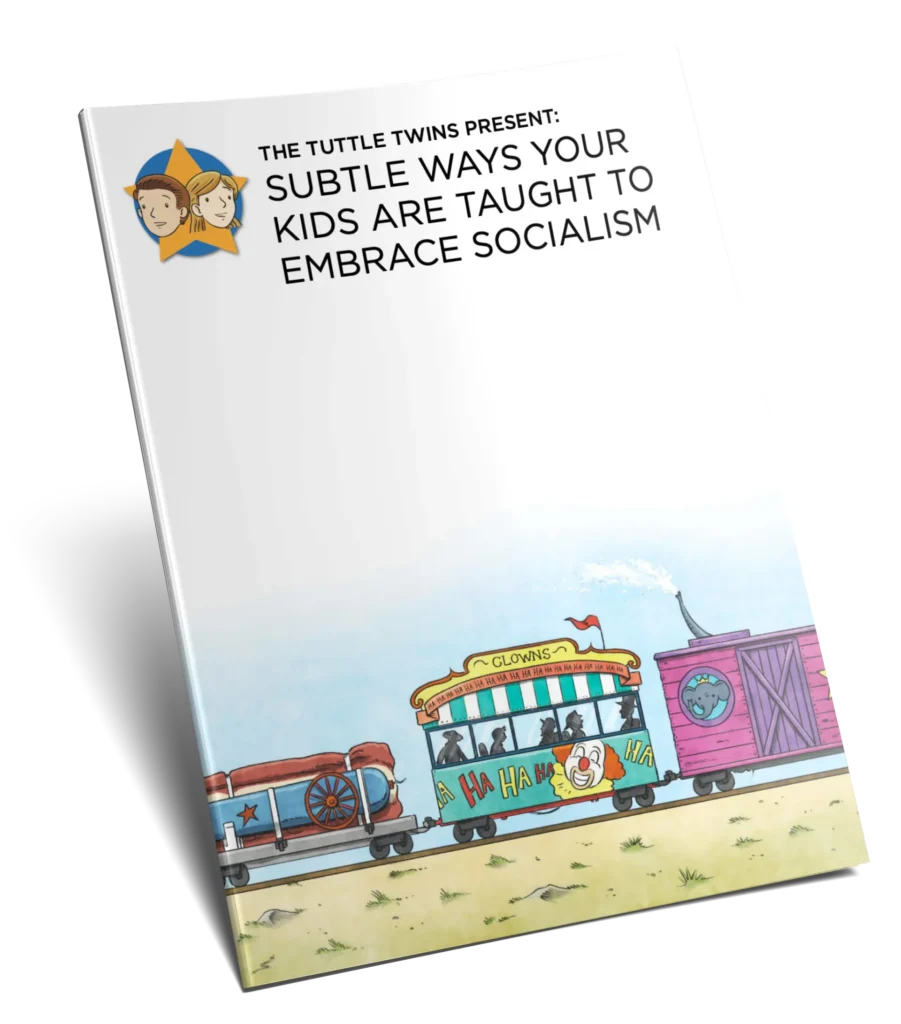
Free market principles can be taught to kids using simple activities and relatable examples. These concepts help children develop critical skills like responsibility, problem-solving, and financial literacy. Here’s a quick summary of how to make these ideas easy to understand:
-
Key Concepts:
- Voluntary Exchange: People trade goods or services willingly.
- Supply and Demand: Prices depend on availability and desire.
- Competition: Businesses strive to improve and attract customers.
- Profit Motive: Creating value to earn money.
-
Everyday Examples:
- Start a business: Teaches pricing, competition, and demand.
- Trading Cards: Explains scarcity and value.
- Shopping Trips: Compare prices to discuss competition and choices.
-
Teaching Tools:
- Games: Monopoly, Cash Flow for Kids
- Books: The Tuttle Twins, Whatever Happened to Penny Candy?
- Activities: Youth markets, pretend stores, or small business projects
Basics of Free Markets: Simple Explanations
What Are Free Markets?
Think of free markets as a big, open playground where people can buy, sell, or trade what they own without being forced into any decisions. It’s a system built on voluntary exchange. Picture your toy collection: you own those toys (private ownership) and can choose to keep, trade, or share them with others based on what you want. Businesses operate in a similar way, deciding how to use their products and services to trade with others.
Key Principles of Free Markets
Free markets operate based on a few straightforward ideas:
- Supply and Demand: Prices are influenced by how much of something is available and how badly people want it. If an item is rare but in high demand, prices go up. If there’s too much of it, prices drop. This dynamic keeps markets active, much like kids trying to trade popular toys or snacks.
- Competition: Businesses work to improve their products or lower their prices to attract customers. This competition sparks improvement, similar to kids practicing to get better at games or sports.
- Profit Motive: Businesses aim to earn money by offering things that people need or want.
Simple Analogies for Kids
Free market ideas can be made relatable for kids through everyday examples:
- The Lemonade Stand: Running a lemonade stand shows how free markets function. On a hot day, demand increases, leading to more sales. If there are competing stands nearby, you’ll need to improve your recipe or lower prices to attract customers.
- Trading Cards: Trading cards are a great way to explain supply and demand. Rare cards are worth more because many people want them, but there aren’t enough to go around.
With examples like these, kids can understand economic concepts through familiar scenarios. These lessons make free market principles easy to grasp and remember.
Teaching Free Market Economics: Practical Methods
Using Everyday Scenarios
Everyday activities like grocery shopping can be great opportunities to explain free market ideas. For example, while shopping, compare prices between brands or stores. When your child notices price differences, explain how competition between stores keeps prices in check for customers. Use this moment to discuss why some items cost more than others, introducing basic ideas like supply and demand.
You can also teach kids about managing money by helping them divide their allowance into categories like spending, saving, and giving. This introduces the concept of resource allocation. When they want to buy something, guide them in comparing prices and quality—just like businesses do when making decisions in the marketplace.
Beyond these day-to-day examples, structured games and tools can help reinforce these lessons.
Hands-On Learning with Games and Activities
Board games are a fun way to explore market concepts. Classics like Monopoly teach property ownership and investment strategies, while newer games like Cash Flow for Kids focus on financial literacy. These games let kids experience market dynamics in a risk-free setting.
Programs like the Children’s Entrepreneur Market provide hands-on experience. Kids learn how to set prices, interact with customers, and manage competition. These activities make free market concepts more relatable and practical. For example:
| Concept | How It’s Applied |
|---|---|
| Price Setting | Deciding fair prices for their items |
| Customer Service | Engaging with buyers and responding to feedback |
| Competition | Standing out from other sellers |
| Profit Management | Keeping track of costs and earnings |
Leveraging Educational Tools
Books, videos, and online resources can make learning about free markets both fun and accessible. The Tuttle Twins series, for instance, offers materials tailored to teach free market principles to kids. Start with simple books for younger children and gradually introduce more complex concepts as they grow.
Other helpful resources include:
- Kid-friendly magazines that explain current economic events in simple terms
- Videos that visually demonstrate market principles
- Interactive online platforms that simulate real-world market activities
These tools keep kids engaged while giving them practical insights into how free markets work through interactive and relatable content.
Teaching Strategies by Age Group
Teaching Young Children
For kids aged 4-8, focus on building a basic understanding through playful, hands-on activities. Use simple stories and relatable examples from their daily lives to make abstract ideas easier to grasp.
Start with activities like trading toys or snacks to show how voluntary exchange works. For example, set up a pretend store where children can "buy" and "sell" using play money. This introduces ideas like value, choice, and fair trade in a fun way.
Games such as Monopoly Junior or activities like Musical Chairs can also help. In Musical Chairs, the limited number of chairs (supply) compared to players (demand) creates competition, showing how scarcity influences decisions.
Books like the Tuttle Twins toddler series use colorful illustrations to teach young children early economic ideas, tying them to familiar ABC and 123 themes.
As children grow, these early lessons can evolve into more complex activities and discussions that build on their initial understanding.
Teaching Older Children
For kids aged 9-13, expand on earlier lessons by introducing more advanced concepts and practical experiences. This age group can begin exploring free market principles through activities like starting small businesses and engaging in critical thinking exercises.
Running small businesses gives kids a firsthand understanding of free market principles by letting them experience profit-making and decision-making. Programs like the Children’s Entrepreneur Market provide real opportunities for kids to apply these lessons.
Here are some key areas older children can learn about through practical activities:
| Learning Area | Practical Example |
|---|---|
| Price Setting | Deciding competitive prices for their products |
| Market Research | Learning what customers want and need |
| Competition | Experiencing how businesses compete in a market |
| Financial Management | Tracking costs, profits, and overall finances |
Books like Economics for Everybody and Whatever Happened to Penny Candy? simplify complex economic ideas for this age group. Encourage discussions about real-life scenarios, such as comparing prices at different stores or analyzing why some businesses thrive while others don’t. This helps them connect free market principles to everyday life and understand their broader role in society.
Encouraging Critical Thinking About Free Markets
Questions to Ask Children
Engaging kids with thoughtful questions can help them grasp how free markets work while sharpening their critical thinking skills. The next time you’re at a store or market, try asking questions based on their age and understanding:
For younger children:
- "What makes this store your favorite?"
- "Why do you choose one product over another?"
For older children:
- "Why do prices vary between stores?"
- "How do businesses decide what to sell?"
- "What happens when lots of people want something that’s hard to find?"
These questions encourage kids to notice how markets operate. Take them to places like farmer’s markets and point out how vendors stand out by emphasizing quality, presentation, or customer service [4].
Applying Free Market Principles
Once kids start noticing how markets work, they can take it a step further by applying these ideas in real-life situations. Encourage them to explore free market principles through activities like:
| Learning Experience | Skills Developed | Real-World Application |
|---|---|---|
| Setting Prices | Understanding supply and demand | Recognizing market value |
| Customer Service | Creating value | Building strong customer relationships |
| Product Development | Problem-solving | Spotting business opportunities |
| Money Management | Allocating resources | Making smart financial decisions |
Hands-on experiences can make these lessons stick. Some ideas include:
- Discussing why certain businesses succeed while others don’t, focusing on competition and meeting customer needs
- Exploring how customer preferences influence business strategies
- Participating in youth markets or starting small business projects
Practical entrepreneurship helps kids understand free market concepts far better than theory alone. Programs like youth markets let kids experiment with pricing, customer service, and basic business management.
sbb-itb-c0d5d15
Resources for Parents
Recommended Books and Curriculums
Looking for ways to teach kids about economics? These books and curriculums break down complex ideas into easy-to-understand lessons:
- The Tuttle Twins series uses engaging stories to explain topics like property rights, entrepreneurship, and free markets.
- Free Market Rules curriculum is an award-winning economic curriculum helps children of all ages learn about the free market from the Tuttle Twins.
- "Whatever Happened to Penny Candy?" by Richard Maybury simplifies basic economic principles with relatable examples and historical context.
- "Economics for Everybody" by RC Sproul Jr. includes detailed lesson plans, parent guides, and hands-on activities. It’s perfect for homeschooling or as extra learning material.
Educational Games and Apps
Interactive games and apps can make learning about economics enjoyable. Here are a few options:
| Game Type | Learning Focus | Age Range |
|---|---|---|
| Monopoly | Real estate and investment | 8+ |
| How the Market Works | Virtual stock trading | 12+ |
| Virtual Business Simulators | Enterprise management | 10+ |
Community and Online Support
For free resources and community help, check out these platforms:
- The Foundation for Economic Education (FEE.org): Offers articles and videos tailored for young learners.
- The Children’s Entrepreneur Market: Hands-on learning opportunities through youth markets.
Parents can also explore educational portals like:
- The Mises Institute: Packed with materials for teaching economic concepts.
- The Acton Institute: Features family-oriented resources and tools.
These platforms provide not only learning materials but also forums for parents to exchange ideas and strategies. With these tools, you’ll feel equipped to help your kids build a strong understanding of free market principles and how they apply in everyday life.
Why Do People Like Free Markets?
Conclusion: Preparing Kids for the Future
Teaching free market principles to kids can be simplified into approachable, relatable steps. Programs focused on youth entrepreneurship show how hands-on experiences can help children understand economic ideas in a practical way.
The secret to making these lessons stick is keeping them relevant and engaging. Tools like Monopoly, books such as Whatever Happened to Penny Candy?, and real-world experiences at local markets allow kids to grasp how free markets operate.
These lessons go beyond economics. They help kids build critical skills like problem-solving, financial literacy, and entrepreneurial thinking. Parents have access to a variety of resources, from educational books to online platforms like the Foundation for Economic Education, to make these concepts accessible and easy to teach.
Here are some strategies parents can use:
- Interactive games: Simulate market scenarios in a fun way.
- Educational materials: Choose resources that match your child’s age and understanding.
- Hands-on activities: Encourage participation in youth markets or similar events.
- Books and online tools: Use age-appropriate content to deepen their knowledge.
By starting with simple activities and gradually building on these ideas, parents can help their children develop a strong understanding of free market principles. These skills will prepare them to navigate and succeed in a competitive economic environment.
With consistent effort and the right resources, parents can empower their kids to not only understand but actively participate in free market systems.
FAQs
How to teach economics to your kids?
The best way to teach kids about economics is through activities and resources that are both fun and practical. According to the Foundation for Economic Education, using real-world experiences can make these concepts easier to grasp.
Parents can encourage kids to start small ventures, play games like Monopoly to understand market dynamics, or join programs such as the Children’s Entrepreneur Market. These activities help kids learn about pricing, customer service, and competition in a hands-on way.
These approaches not only introduce kids to economic principles but also help them see how free market ideas work in everyday life.
What is capitalism in simple terms for kids?
Capitalism is a system where people and businesses own their things and decide how to use them. Think of it like running a toy store – you choose what toys to sell and how to attract buyers.
To make it more relatable, parents can take kids to local markets or stores. Show them how prices change based on supply and demand or how businesses compete for customers. This helps kids understand how goods and services are exchanged based on individual choices in a free market.



